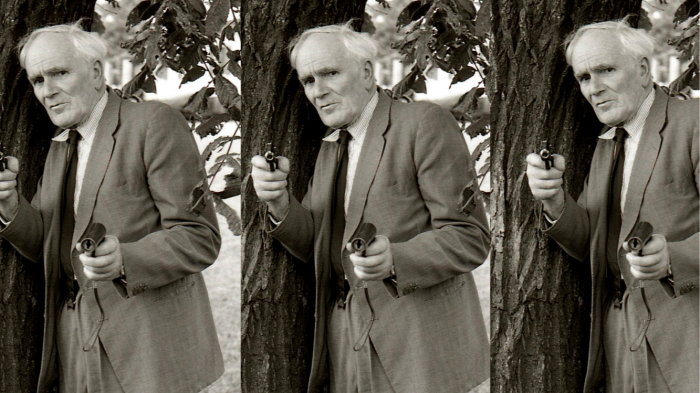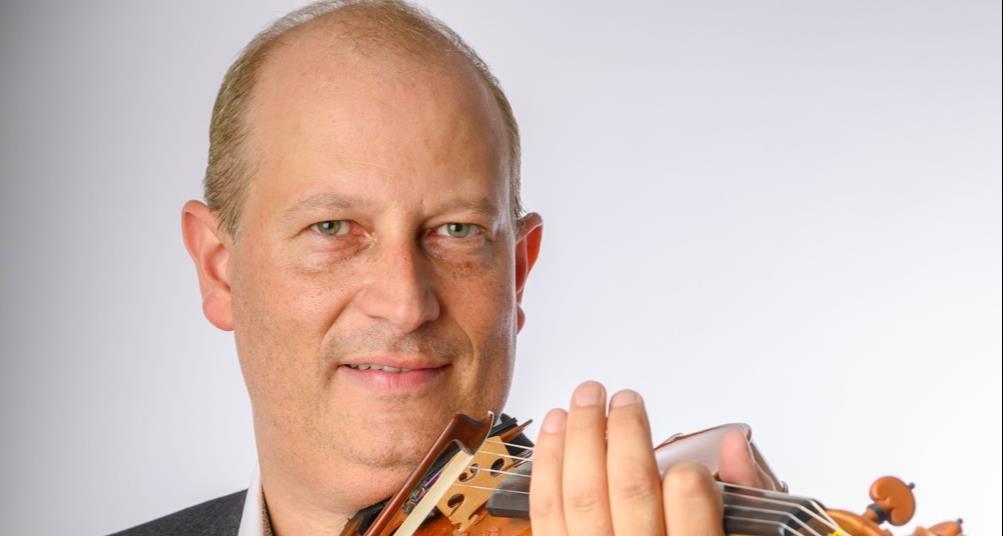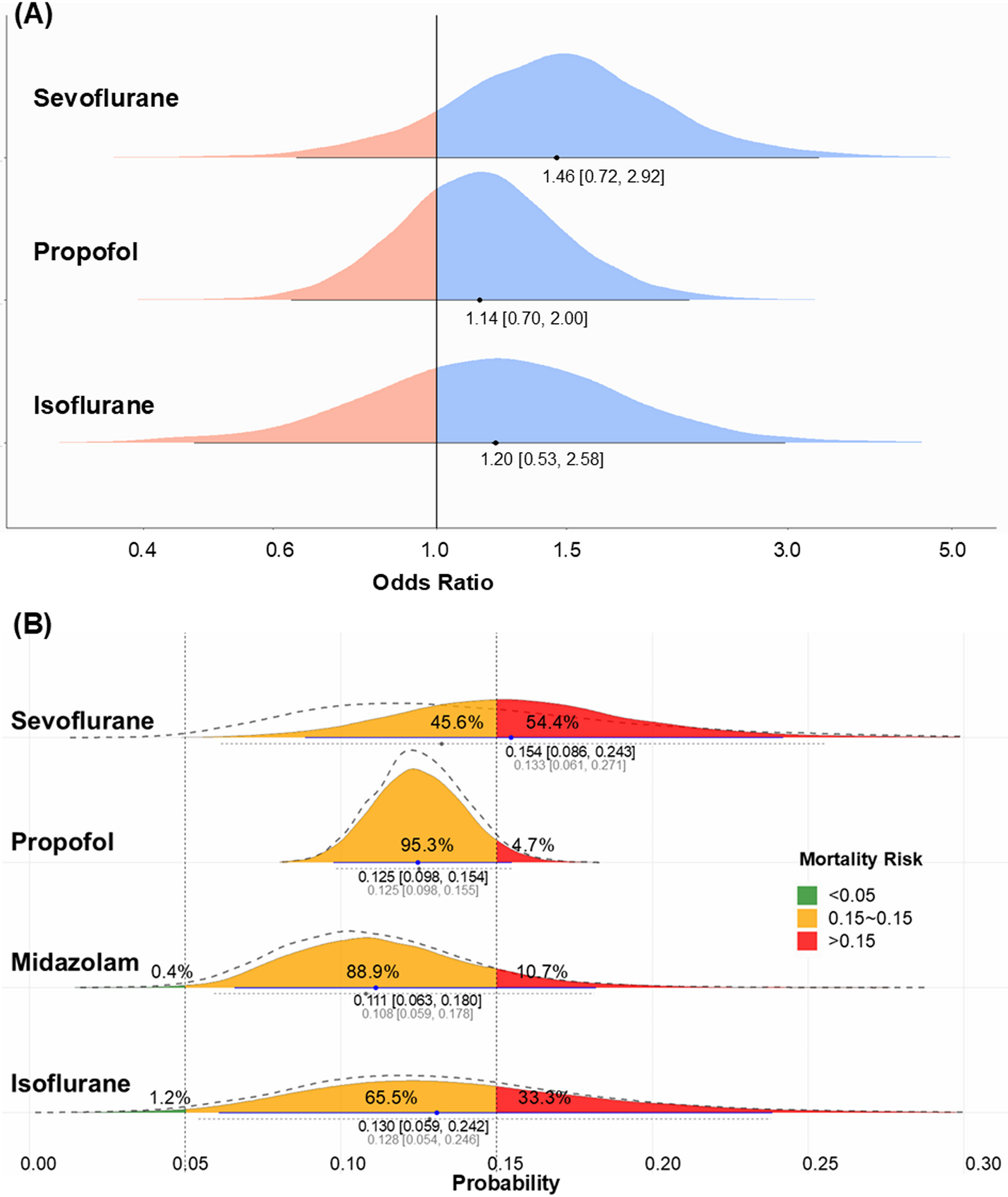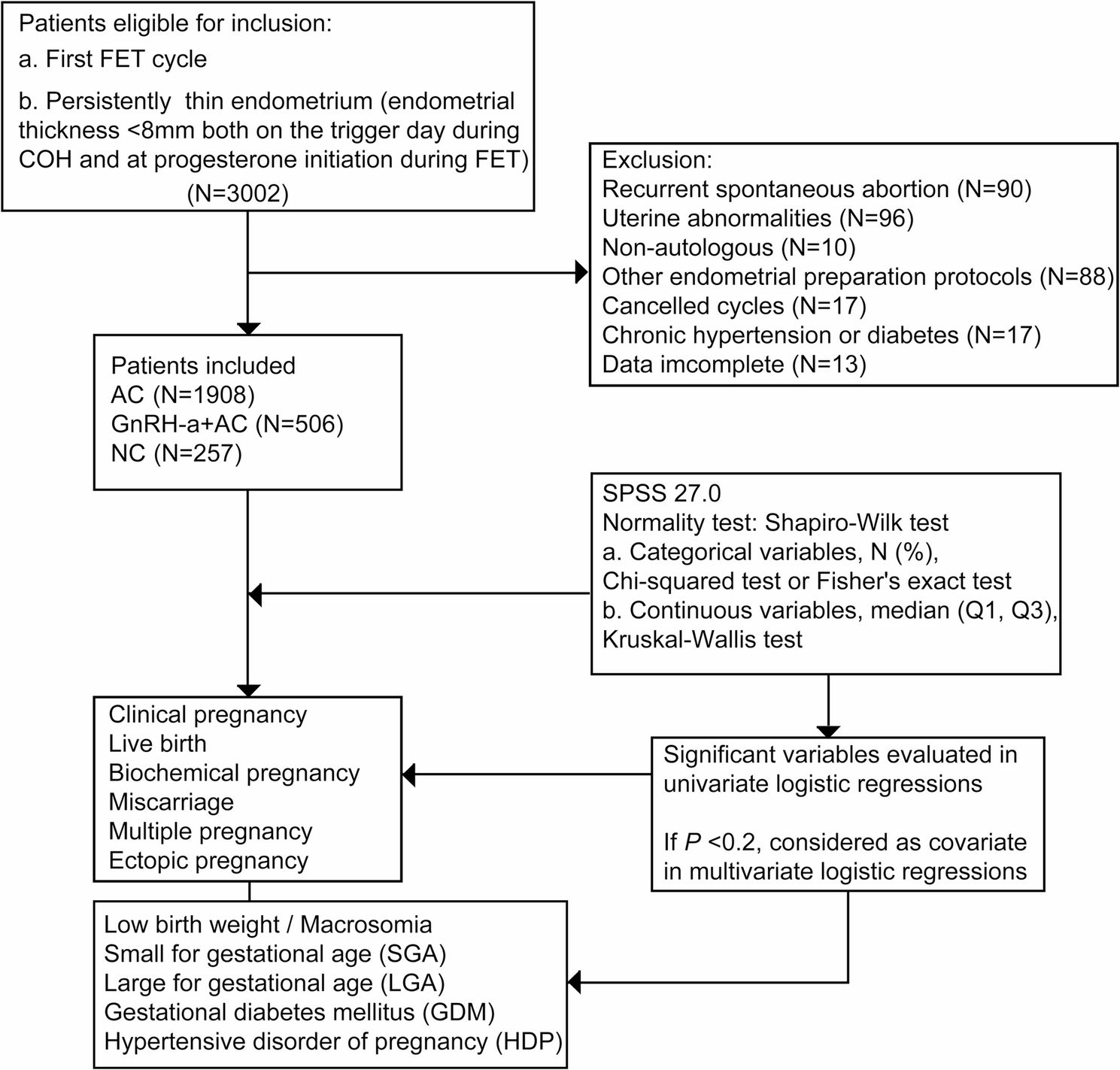If you have children of the appropriate age you will be familiar with the cat-obsessed Netflix show Gabby’s Dollhouse. It’s sunny, sweet and wholesome; a crafting bonanza packed with kitty catchphrases like “pawesome!” and…
Blog
-

Inside the knotty economics of the world’s most profitable ETF
The Invesco QQQ exchange traded fund — the primary vehicle for investors that want to track the technology-heavy Nasdaq 100 index — is easily the most lucrative ETF in the world.
The combination of its $385bn size and chunky 20 basis fee means that it spurts out $770mn of revenue annually, beating the SPDR S&P 500 ETF (SPY) into second place in Morningstar’s global ranking.
In fact, “Triple-Q” alone generates almost four times as much as Vanguard’s flagship S&P 500 ETF (VOO), which manages a record $774bn. The Invesco ETF’s revenues are greater than the profits of Schroders, Janus Henderson or Franklin Resources.
Its success has feathered many nests. Nasdaq was paid $205mn last year alone in licensing fees, according to QQQ’s annual report. Bank of New York Mellon, its trustee, was handed a cool $109mn. A bewildering array of US sports teams, leagues and festivals have also enjoyed a QQQ windfall, thanks to the ETF’s extensive marketing — $175mn’s worth last year alone.
But one company has notably missed out on this bonanza: Invesco. This is because of QQQ’s unusual structure as a “unit investment trust” — a relic of the ETF industry’s origin in the primordial soup of the 1990s — rather than the now far more commonplace open-ended ETF format.
Under this weird structure, any revenues left over after paying expenses such as licensing and trustee fees can only be used for marketing purposes.
This is immensely frustrating to Invesco. Given that the near-$2tn asset manager only generated net income of $538mn last year, an annual payout in line with the handouts to Nasdaq or BONY Mellon would deliver a healthy boost to its bottom line. Instead, Invesco has had to resort to selling a series of cheap knock-offs of its own flagship fund — like QQQM, QQQS, QQJG and QQMG — where it can at least pocket the full fees.
As it happens, Christmas may come two months early for Invesco, with a vote due next week that could correct this anomaly (and deliver a modest bonus for investors to boot). 🎉
This could prove such a big deal that the asset manager’s share price soared when it proposed to change QQQ’s structure.

However, let’s first take a quick look at QQQ’s genesis story and how it ended up at Invesco, before we dig into the coming vote and what it means.
The unit investment trust issue probably didn’t matter much to the creators of QQQ, Nasdaq Stock Market Inc, which launched the fund in 1999 largely as a means to promote its flagship index. (Fun fact — it wasn’t even listed on the Nasdaq exchange but on the rival American Stock Exchange, then the world leader for all things ETFy). Here’s a discussion of QQQ’s birth with its main progenitor, former Nasdaq chief marketing officer John Jacobs:
QQQ’s perambulations began in 2004 when it was licensed to Chicago’s PowerShares, then a flashy up-and-coming ETF boutique, and upped sticks to the Nasdaq exchange.
Two years later Invesco snapped up PowerShares, in the process absorbing the Qs — as some fans call it — the jewel in PowerShares’ crown with a whopping (for the time) AUM of $27bn.
Since then QQQ has became synonymous with the success of American technology stocks, and has ballooned 14x in size. It is now bigger than the entire stock markets of Thailand, Norway, Poland or Malaysia.

Invesco’s missing sponsor fee has similarly mushroomed over those years. But that could potentially soon change. On October 24, QQQ’s shareholders will vote on converting the fund into a more modern open-ended ETF.
The switcheroo would also allow QQQ to reinvest dividends prior to distribution and to engage in securities lending for the first time, both activities outlawed for unit investment trusts. As a sweetener, Invesco is also proposing to trim the fee paid by investors from 20bp to 18bp.
The biggest winner would, of course, be Invesco, which would no longer have to spaff the excess revenue on marketing, but could grab the lucre for itself, turning the Qs into a cash cow. Its filing to the Securities and Exchange Commission “to modernise and optimise” the ETF shines a light on this:
Under the Advisory Agreement any marketing of the Trust would be paid out of Invesco’s unitary fee, inherently lowering Invesco’s revenue (and potential profits).
Accordingly, although Invesco anticipates that it will continue to market the Trust to potential shareholders to the extent it believes appropriate and beneficial to both the Trust (in the form of increasing the Trust’s scale) and Invesco (in the form of increasing the assets of the Trust on which Invesco will earn a fee), Invesco will nonetheless have an embedded disincentive to do so, particularly in comparison to the Trust’s current state.
Accordingly, it is likely that the overall extent of the marketing of the Trust (and potential benefits of such marketing to existing shareholders) will decrease significantly. However, Invesco believes that at the Trust’s current size and scale, any potential negative impacts associated with less marketing of the Trust will be more than offset by the benefits realized by Shareholders through the lower expense ratio (0.18% as compared to 0.20%).
The filing says that Invesco envisages roughly halving the current marketing budget from the 5-6 basis points of assets to about 2-3 bps — or $60-100mn.
In other words, around $100mn a year will be stripped from the likes of college football, baseball, the women’s basketball Hall of Fame, financial literacy, and . . . chefs. Nor will we probably have ads like this any more:
As Invesco’s CFO Allison Dukes told a conference last month: “The marketing budget had just become so large that it’s hard to efficiently spend”. Which is a nice problem to have, but Invesco would prefer to spend the money elsewhere.
The major obstacle is ensuring that at least 50 per cent of shares are voted on October 24, which is necessary to reach quorum and change the structure.
Little wonder that Invesco has therefore peppered investors with emails imploring them to vote and retained Sodali Fund Services “to assist in any additional proxy solicitation”.
Alphaville wonders if State Street Investment Management is paying close attention. Both SPY, with its $661bn of assets, and the sister $40bn SPDR Dow Jones Industrial Average ETF Trust are among the handful of other ETFs still structured as unit investment trusts.
SPY’s annual report does reveal $81mn of marketing expenses in the past financial year, out of total expenses of $473mn. State Street has, though, already found a canny way of keeping much of the revenue in-house.
Its trustee gobbled up $232mn last year, almost half of the total. Who is that mystery trustee, you ask? Well, none other than State Street Global Advisors Trust Company.
Continue Reading
-

Antoni Milambo suffers ACL injury | Brentford FC
Brentford midfielder Antoni Milambo suffered an anterior cruciate ligament injury on international duty with Netherlands Under-21s.
The 20-year-old, who signed for the Bees over the summer from Feyenoord, will undergo surgery and will be in…
Continue Reading
-

Why Hit-Boy says new album ‘Software Update’ represents more than musical reinvention
In his childhood home, Chauncey Alexander Hollis Jr., a.k.a. multi-Grammy-winning producer Hit-Boy, loved watching the 1991 film “The Five Heartbeats,” based loosely on the legacy of Motown R&B groups. At his North Hollywood studio, Hit…
Continue Reading
-

Hackers are using a new phishing kit to steal Microsoft 365 credentials and MFA tokens – Whisper 2FA is evolving rapidly and has been used in nearly one million attacks since July
Security firm Barracuda has issued a warning to Microsoft 365 users after researchers uncovered a new Phishing as a Service (PhaaS) tool that’s being used to target millions of accounts.
Whisper 2FA steals both credentials and MFA tokens while…
Continue Reading
-

The Strad News – United Arab Emirates National Orchestra appoints new leader
Read more news stories here
The United Arab Emirates National Orchestra (UAENO) in Abu Dhabi has announced the appointment of German violinist Nicolas Koeckert as its first concertmaster, effective October 2025.
Koeckert was born in Munich and…
Continue Reading
-

BMW Ladies Championship makes first appearance on a spectacular links course.
+++ South Korea’s only LPGA tournament takes place from October 16 to
19 for the first time at Pine Beach Golf Links +++ World-class field
led by defending champion Hannah Green (AUS) tees off +++ 78 players
compete for…Continue Reading
-

Is volatile sedation truly associated with increased mortality in mechanically ventilated critically ill adults compared to intravenous sedation? Moving beyond pairwise meta-analysis to individual agent assessment via bayesian network meta-analysis | Critical Care
Yamamoto T, Kotani Y, Akutagawa K, Nagayama T, Tomimatsu M, Tonai M, Karumai T, Hayashi Y. Volatile sedation in critically ill adults undergoing mechanical ventilation: a meta-analysis of randomized controlled trials. Crit Care. 2025;29(1):227.
Continue Reading
-

Pregnancy and obstetric-neonatal outcomes of patients with thin endometrium using three different endometrial preparation protocols in frozen embryo transfer cycles: a historical cohort of 2671 patients | Reproductive Health
Sunderam S, Kissin DM, Zhang Y, Jewett A, Boulet SL, Warner L, et al. Assisted reproductive technology surveillance – United States, 2018. MMWR Surveill Summ. 2022;71(4):1–19.
Google Scholar
Bai F, Wang DY, Fan YJ, Qiu J, Wang L, Dai Y, et al. Assisted reproductive technology service availability, efficacy and safety in mainland china: 2016. Hum Reprod. 2020;35(2):446–52.
Google Scholar
Wyns C, De Geyter C, Calhaz-Jorge C, Kupka MS, Motrenko T, Smeenk J, et al. ART in Europe, 2018: results generated from European registries by ESHRE. Hum Reprod Open. 2022;2022(3):hoac022.
Google Scholar
Banker M, Dyer S, Chambers GM, Ishihara O, Kupka M, de Mouzon J, et al. International committee for monitoring assisted reproductive technologies (ICMART): world report on assisted reproductive technologies, 2013. Fertil Steril. 2021;116(3):741–56.
Google Scholar
Chambers GM, Dyer S, Zegers-Hochschild F, de Mouzon J, Ishihara O, Banker M, et al. International committee for monitoring assisted reproductive technologies world report: assisted reproductive technology, 2014. Hum Reprod. 2021;36(11):2921–34.
Google Scholar
Rienzi L, Gracia C, Maggiulli R, LaBarbera AR, Kaser DJ, Ubaldi FM, et al. Oocyte, embryo and blastocyst cryopreservation in ART: systematic review and meta-analysis comparing slow-freezing versus vitrification to produce evidence for the development of global guidance. Hum Reprod Update. 2017;23(2):139–55.
Google Scholar
Wong KM, Mastenbroek S, Repping S. Cryopreservation of human embryos and its contribution to in vitro fertilization success rates. Fertil Steril. 2014;102(1):19–26.
Google Scholar
Wei D, Liu JY, Sun Y, Shi Y, Zhang B, Liu JQ, et al. Frozen versus fresh single blastocyst transfer in ovulatory women: a multicentre, randomised controlled trial. Lancet. 2019;393(10178):1310–8.
Google Scholar
Wiegel RE, Jan Danser AH, Steegers-Theunissen RPM, Laven JSE, Willemsen SP, Baker VL, et al. Determinants of maternal Renin-Angiotensin-Aldosterone-System activation in early pregnancy: insights from 2 cohorts. J Clin Endocrinol Metab. 2020;105(11):3505–17.
Google Scholar
Koerts JJ, Voskamp LW, Rousian M, Steegers-Theunissen RPM, Wiegel RE. Impact of corpus luteum number on maternal pregnancy and birth outcomes: the Rotterdam periconception cohort. Fertil Steril. 2025;123(6):1039–50.
Google Scholar
Zaat TR, Kostova EB, Korsen P, Showell MG, Mol F, van Wely M. Obstetric and neonatal outcomes after natural versus artificial cycle frozen embryo transfer and the role of luteal phase support: a systematic review and meta-analysis. Hum Reprod Update. 2023;29(5):634–54.
Google Scholar
Roelens C, Blockeel C. Impact of different endometrial preparation protocols before frozen embryo transfer on pregnancy outcomes: a review. Fertil Steril. 2022;118(5):820–7.
Google Scholar
Ho VNA, Pham TD, Nguyen NT, Wang R, Norman RJ, Mol BW, et al. Livebirth rate after one frozen embryo transfer in ovulatory women starting with natural, modified natural, or artificial endometrial preparation in Viet nam: an open-label randomised controlled trial. Lancet. 2024;404(10449):266–75.
Google Scholar
Ghobara T, Gelbaya TA, Ayeleke RO. Cycle regimens for frozen-thawed embryo transfer. Cochrane Database Syst Rev. 2017;7(7):Cd003414.
Google Scholar
Busnelli A, Schirripa I, Fedele F, Bulfoni A, Levi-Setti PE. Obstetric and perinatal outcomes following programmed compared to natural frozen-thawed embryo transfer cycles: a systematic review and meta-analysis. Hum Reprod. 2022;37(7):1619–41.
Google Scholar
Yuan Y, Chang Q, Wen Y, Gao J, Huang S, Xu Y, et al. Letrozole during frozen embryo transfer in women with polycystic ovarian syndrome: a randomized controlled trial. Obstet Gynecol. 2023;142(5):1087–95.
Google Scholar
Salemi S, Yahyaei A, Vesali S, Ghaffari F. Endometrial preparation for vitrified-warmed embryo transfer with or without GnRH-agonist pre-treatment in patients with polycystic ovary syndrome: a randomized controlled trial. Reprod Biomed Online. 2021;43(3):446–52.
Google Scholar
Li J, Lin Z, Mo S, Wang S, Li Y, Shi Q. Pretreatment with or without GnRH-agonist before frozen-thawed embryo transfer in patients with PCOS: a systematic review and meta-analysis. J Ovarian Res. 2024;17(1):130.
Google Scholar
Niu Z, Chen Q, Sun Y, Feng Y. Long-term pituitary downregulation before frozen embryo transfer could improve pregnancy outcomes in women with adenomyosis. Gynecol Endocrinol. 2013;29(12):1026–30.
Google Scholar
Guo Y, Fang Z, Yu L, Sun X, Li F, Jin L. Which endometrial preparation protocol provides better pregnancy and perinatal outcomes for endometriosis patients in frozen-thawed embryo transfer cycles? A retrospective study on 1413 patients. J Ovarian Res. 2023;16(1):7.
Google Scholar
Magnusson Å, Hanevik HI, Laivuori H, Loft A, Piltonen T, Pinborg A, et al. Endometrial preparation protocols prior to frozen embryo transfer – convenience or safety? Reprod Biomed Online. 2024;48(1):103587.
Google Scholar
Polyzos NP. Endometrial preparation protocols for frozen embryo transfer: risk assessment and individualized management. Hum Reprod. 2025;deaf149.
Hamze H, Alameh W, Hemmings R, Jamal W, Banan A, Sylvestre C. The science of frozen embryo transfer, is modified natural cycle better? Gynecol Endocrinol. 2025;41(1):2533481.
Google Scholar
Liu X, Li W, Wen W, Wang T, Wang T, Sun T, et al. Natural cycle versus hormone replacement therapy as endometrial preparation in ovulatory women undergoing frozen-thawed embryo transfer: the compete open-label randomized controlled trial. PLoS Med. 2025;22(6):e1004630.
Google Scholar
Huang J, Liao Y, Xia L, Wu H, Liu Z, Lin J, et al. Impact of endometrial preparation protocols on pregnancy outcomes in patients with unexplained recurrent implantation failure undergoing frozen embryo transfer. Ultrasound Obstet Gynecol. 2025;65(5):633–40.
Google Scholar
Guo Z, Chu R, Zhang L, Yu Q, Yan L, Ma J. Fresh versus frozen embryo transfer in women with thin endometrium: a retrospective cohort study. Ann Transl Med. 2020;8(21):1435.
Google Scholar
Stentz N, Devine K. Through thick and thin: time to stop worrying about endometrial thickness? Fertil Steril. 2021;116(1):71–2.
Google Scholar
Liu KE, Hartman M, Hartman A, Luo ZC, Mahutte N. The impact of a thin endometrial lining on fresh and frozen-thaw IVF outcomes: an analysis of over 40 000 embryo transfers. Hum Reprod. 2018;33(10):1883–8.
Google Scholar
Kasius A, Smit JG, Torrance HL, Eijkemans MJ, Mol BW, Opmeer BC, Broekmans FJ. Endometrial thickness and pregnancy rates after IVF: a systematic review and meta-analysis. Hum Reprod Update. 2014;20(4):530–41.
Google Scholar
Mahutte N, Hartman M, Meng L, Lanes A, Luo ZC, Liu KE. Optimal endometrial thickness in fresh and frozen-thaw in vitro fertilization cycles: an analysis of live birth rates from 96,000 autologous embryo transfers. Fertil Steril. 2022;117(4):792–800.
Google Scholar
Gallos ID, Khairy M, Chu J, Rajkhowa M, Tobias A, Campbell A, et al. Optimal endometrial thickness to maximize live births and minimize pregnancy losses: analysis of 25,767 fresh embryo transfers. Reprod Biomed Online. 2018;37(5):542–8.
Google Scholar
Fang Z, Huang J, Mao J, Yu L, Wang X. Effect of endometrial thickness on obstetric and neonatal outcomes in assisted reproduction: a systematic review and meta-analysis. Reprod Biol Endocrinol. 2023;21(1):55.
Google Scholar
Ganer Herman H, Volodarsky-Perel A, Ton Nu TN, Machado-Gedeon A, Cui Y, Shaul J, Dahan MH. Pregnancy complications and placental histology following embryo transfer with a thinner endometrium. Hum Reprod. 2022;37(8):1739–45.
Google Scholar
Guo Z, Xu X, Zhang L, Zhang L, Yan L, Ma J. Endometrial thickness is associated with incidence of small-for-gestational-age infants in fresh in vitro fertilization-intracytoplasmic sperm injection and embryo transfer cycles. Fertil Steril. 2020;113(4):745–52.
Google Scholar
Oron G, Hiersch L, Rona S, Prag-Rosenberg R, Sapir O, Tuttnauer-Hamburger M, et al. Endometrial thickness of less than 7.5 mm is associated with obstetric complications in fresh IVF cycles: a retrospective cohort study. Reprod Biomed Online. 2018;37(3):341–8.
Google Scholar
Liu KE, Hartman M, Hartman A. Management of thin endometrium in assisted reproduction: a clinical practice guideline from the Canadian fertility and andrology society. Reprod Biomed Online. 2019;39(1):49–62.
Google Scholar
Wang P, Yang H, Chen Z, Chen Y, Jin C, Yu R, et al. Agonist long protocol improves outcomes of vitrified-warmed embryo transfer in repeatedly thin endometrium. Reprod Biomed Online. 2023;46(3):527–35.
Google Scholar
Ali J, Magray S, Ahmed E, Talo S. A case report of successful live pregnancy following embryo transfer in a thin endometrium. Cureus. 2024;16(8):e66363.
Google Scholar
Nagaraja N, Poddar SD, Rai S, Verma V, Abhisheka K, Khurana A. Improved pregnancy outcomes and endometrial receptivity by thawed frozen embryo transfer in mildly stimulated cycles with letrozole combined with estrogen in women with unresponsive thin endometrium compared to standard endometrial preparation with estrogen alone: a retrospective study. J Obstet Gynaecol India. 2023;73(4):351–7.
Google Scholar
Xia L, Tian L, Zhang S, Huang J, Wu Q. Hormonal replacement treatment for Frozen-Thawed embryo transfer with or without GnRH agonist pretreatment: A retrospective cohort study stratified by times of embryo implantation failures. Front Endocrinol (Lausanne). 2022;13:803471.
Hu X, Yan E, Peng W, Zhou Y, Jin L, Qian K. Higher pre-pregnancy body mass index was associated with adverse pregnancy and perinatal outcomes in women with polycystic ovary syndrome after a freeze-all strategy: a historical cohort study. Acta Obstet Gynecol Scand. 2024;103(5):884–96.
Google Scholar
Zhou R, Zhang X, Huang L, Wang S, Li L, Dong M, et al. The impact of different cycle regimens on birthweight of singletons in frozen-thawed embryo transfer cycles of ovulatory women. Fertil Steril. 2022;117(3):573–82.
Google Scholar
Roelens C, Racca A, Mackens S, Van Landuyt L, Buelinckx L, Gucciardo L, et al. Artificially prepared vitrified-warmed embryo transfer cycles are associated with an increased risk of pre-eclampsia. Reprod Biomed Online. 2022;44(5):915–22.
Google Scholar
Rodríguez-Eguren A, Bueno-Fernandez C, Gómez-Álvarez M, Francés-Herrero E, Pellicer A, Bellver J, et al. Evolution of biotechnological advances and regenerative therapies for endometrial disorders: a systematic review. Hum Reprod Update. 2024;30(5):584–613.
Google Scholar
Shang Y, Wu M, He R, Ye Y, Sun X. Administration of growth hormone improves endometrial function in women undergoing in vitro fertilization: a systematic review and meta-analysis. Hum Reprod Update. 2022;28(6):838–57.
Google Scholar
Yuan G, Yu C, Du X, Li D, Dou H, Lu P, et al. Injectable GelMA hydrogel microspheres with sustained release of Platelet-Rich plasma for the treatment of thin endometrium. Small. 2024;20(47):e2403890.
Google Scholar
Hu KL, Zhang D, Li R. Endometrium preparation and perinatal outcomes in women undergoing single-blastocyst transfer in frozen cycles. Fertil Steril. 2021;115(6):1487–94.
Google Scholar
Gu F, Wu Y, Tan M, Hu R, Chen Y, Li X, et al. Programmed frozen embryo transfer cycle increased risk of hypertensive disorders of pregnancy: a multicenter cohort study in ovulatory women. Am J Obstet Gynecol MFM. 2023;5(1):100752.
Google Scholar
Ginström Ernstad E, Wennerholm UB, Khatibi A, Petzold M, Bergh C. Neonatal and maternal outcome after frozen embryo transfer: increased risks in programmed cycles. Am J Obstet Gynecol. 2019;221(2):126.e1-e18.
Pereira MM, Mainigi M, Strauss JF. Secretory products of the corpus luteum and preeclampsia. Hum Reprod Update. 2021;27(4):651–72.
Google Scholar
von Versen-Höynck F, Narasimhan P, Selamet Tierney ES, Martinez N, Conrad KP, Baker VL, Winn VD. Absent or excessive corpus luteum number is associated with altered maternal vascular health in early pregnancy. Hypertension. 2019;73(3):680–90.
von Versen-Höynck F, Schaub AM, Chi YY, Chiu KH, Liu J, Lingis M, et al. Increased preeclampsia risk and reduced aortic compliance with in vitro fertilization cycles in the absence of a corpus luteum. Hypertension. 2019;73(3):640–9.
Matorras R, Pijoan JI, Laínz L, Díaz-Nuñez M, Sainz H, Pérez-Fernandez S, Moreira D. Polycystic ovarian syndrome and miscarriage in IVF: systematic revision of the literature and meta-analysis. Arch Gynecol Obstet. 2023;308(2):363–77.
Google Scholar
Vinsonneau L, Labrosse J, Porcu-Buisson G, Chevalier N, Galey J, Ahdad N, et al. Impact of endometrial preparation on early pregnancy loss and live birth rate after frozen embryo transfer: a large multicenter cohort study (14 421 frozen cycles). Hum Reprod Open. 2022;2022(2):hoac007.
Google Scholar
Hatoum I, Bellon L, Swierkowski N, Ouazana M, Bouba S, Fathallah K, et al. Disparities in reproductive outcomes according to the endometrial preparation protocol in frozen embryo transfer: the risk of early pregnancy loss in frozen embryo transfer cycles. J Assist Reprod Genet. 2018;35(3):425–9.
Google Scholar
Tomás C, Alsbjerg B, Martikainen H, Humaidan P. Pregnancy loss after frozen-embryo transfer–a comparison of three protocols. Fertil Steril. 2012;98(5):1165–9.
Google Scholar
Xu B, Geerts D, Hu S, Yue J, Li Z, Zhu G, Jin L. The depot GnRH agonist protocol improves the live birth rate per fresh embryo transfer cycle, but not the cumulative live birth rate in normal responders: a randomized controlled trial and molecular mechanism study. Hum Reprod. 2020;35(6):1306–18.
Google Scholar
Guo S, Li Z, Yan L, Sun Y, Feng Y. GnRH agonist improves pregnancy outcome in mice with induced adenomyosis by restoring endometrial receptivity. Drug Des Devel Ther. 2018;12:1621–31.
Ruan HC, Zhu XM, Luo Q, Liu AX, Qian YL, Zhou CY, et al. Ovarian stimulation with GnRH agonist, but not GnRH antagonist, partially restores the expression of endometrial integrin beta3 and leukaemia-inhibitory factor and improves uterine receptivity in mice. Hum Reprod. 2006;21(10):2521–9.
Google Scholar
Song J, Duan C, Cai W, Wu W, Lv H, Xu J. Comparison of GnRH-a prolonged protocol and short GnRH-a long protocol in patients with thin endometrium for assisted reproduction: A retrospective cohort study. Drug Des Devel Ther. 2020;14:3673–82.
Liu Y, Ma L, Zhu M, Yin H, Yan H, Shi M. Strobe-GnRHa pretreatment in frozen-embryo transfer cycles improves clinical outcomes for patients with persistent thin endometrium: a case-control study. Medicine. 2022;101(31):e29928.
Google Scholar
Continue Reading
-

IATA Launches Global Campaign to Help Travelers Fly Safely with Lithium Batteries
Translation: L’IATA lance une campagne pour aider les voyageurs à voler en toute sécurité avec des batteries au lithium (pdf)
Xiamen – The International Air Transport Association (IATA) has launched ‘Travel Smart with Lithium Batteries’, a global safety campaign that gives travelers seven simple rules for carrying mobile phones, laptops, power banks, and other lithium-powered devices safely when they fly. The campaign will run on IATA’s website and social channels and is available as white-label assets for airlines, airports, and other partners across the travel ecosystem.
“Lithium-powered devices are safe when handled properly, but they can pose a risk if damaged or packed incorrectly. As more travelers fly with these devices, our Travel Smart with Lithium Batteries campaign will help airlines educate their passengers on the simple rules they must keep in mind when traveling with the electronic devices that have become an essential part of their daily lives,” said Nick Careen, IATA’s Senior Vice President, Operations, Safety and Security.
Travelers Are Carrying More Devices but with Incomplete Knowledge
A recent IATA passenger survey found that most travelers fly with lithium-powered devices:
- 83% of travelers carry a phone
- 60% carry a laptop
- 44% carry a power bank
While 93% of travelers consider themselves knowledgeable on the rules for carrying lithium-powered devices (including 57% rating themselves as very familiar with the rules), critical misconceptions persist:
- 50% incorrectly believe it’s OK to pack small lithium-powered devices in checked luggage
- 45% incorrectly believe it’s OK to pack power banks in checked luggage
- 33% incorrectly believe that there are no power limits on power banks or spare batteries
Seven Simple Safety Rules
The campaign assets highlight seven simple rules every traveler should follow:
- Pack light: Only bring the devices and batteries you really need.
- Stay alert: If a device is hot, smoking, or damaged, tell the crew (or airport staff) immediately.
- Keep devices with you: Always carry phones, laptops, cameras, vapes (if allowed) and other battery-powered items in your hand baggage, not in checked baggage.
- Protect loose batteries: Keep spare batteries and power banks in their original packaging, or cover the terminals with tape to prevent short-circuits.
- Gate check reminder: If your hand baggage is taken at the gate to go in the aircraft baggage hold, remove all lithium batteries and devices first.
- Check battery size: For larger batteries (over 100 watt-hours, such as those used in larger cameras, drones, or power tools), check with your airline as approval may be required.
- Check airline rules: Always confirm your airline’s policies, as requirements may differ in compliance with local regulations.
Industry-Wide Rollout
The multilingual campaign will be rolled out through digital assets that airlines and other partners can adapt and share with passengers, ensuring consistent safety messaging across the industry. A short, animated video, designed to make the rules simple, engaging, and easy to remember, can be used by airlines and airports on their digital and social channels.
Campaign assets will also be available to media and other entities in the aviation value chain to help educate travelers on flying safely with their lithium-powered devices.
> Learn more and download the assets
For more information, please contact:
Corporate Communications
Tel: +41 22 770 2967
Email: corpcomms@iata.org
Notes for Editors:
- IATA (International Air Transport Association) represents some 350 airlines comprising over 80% of global air traffic.
- You can follow us on X for announcements, policy positions, and other useful industry information.
- Fly Net Zero
- Common devices that use lithium batteries
Many travelers don’t realize just how many everyday devices contain lithium batteries. Beyond mobile phones and laptops, lithium batteries power a wide range of personal and travel items including tablets, e-readers, wireless headphones, smartwatches, fitness trackers, cameras, portable speakers, power banks, handheld gaming consoles, and electronic styluses. They are also found in everyday personal-care items like electric toothbrushes, shavers, and hair-straighteners, as well as in e-cigarettes, handheld fans, torches, medical devices such as hearing aids and glucose monitors, and compact tools or gadgets like screwdrivers and laser pointers.
Continue Reading
